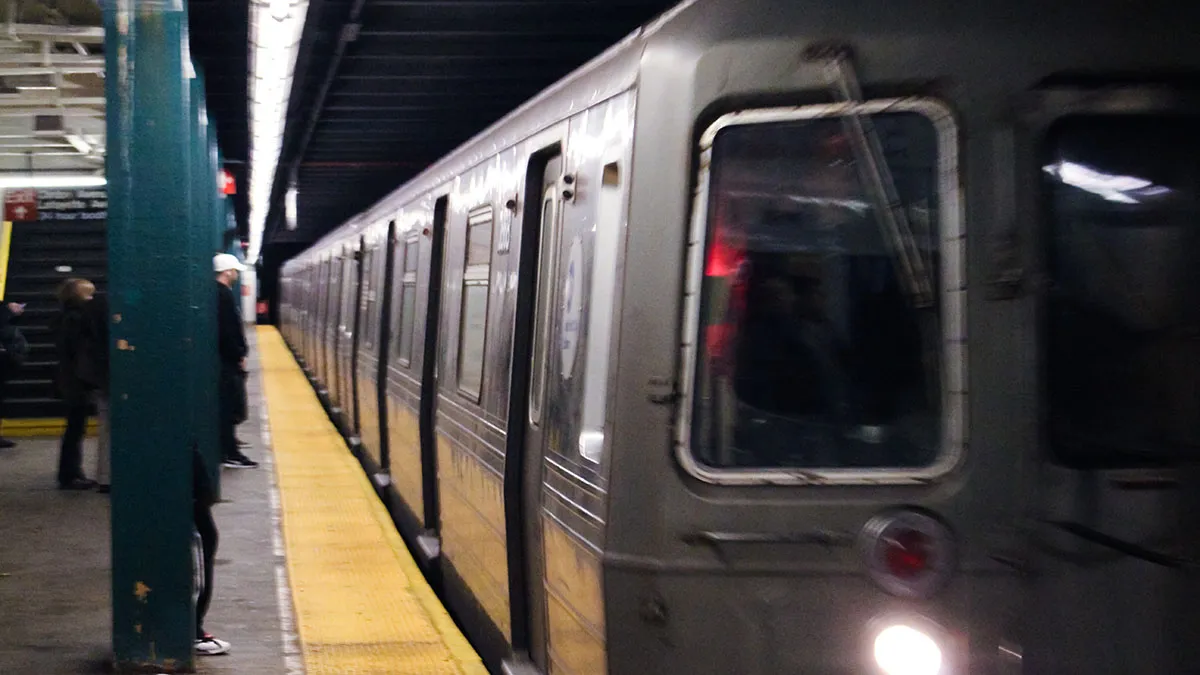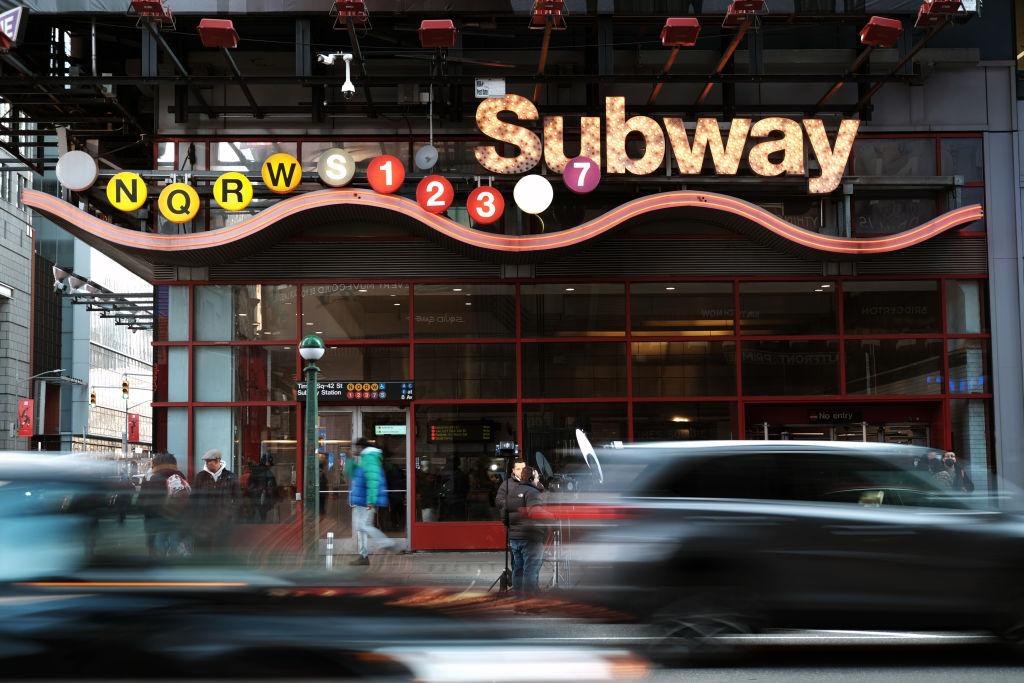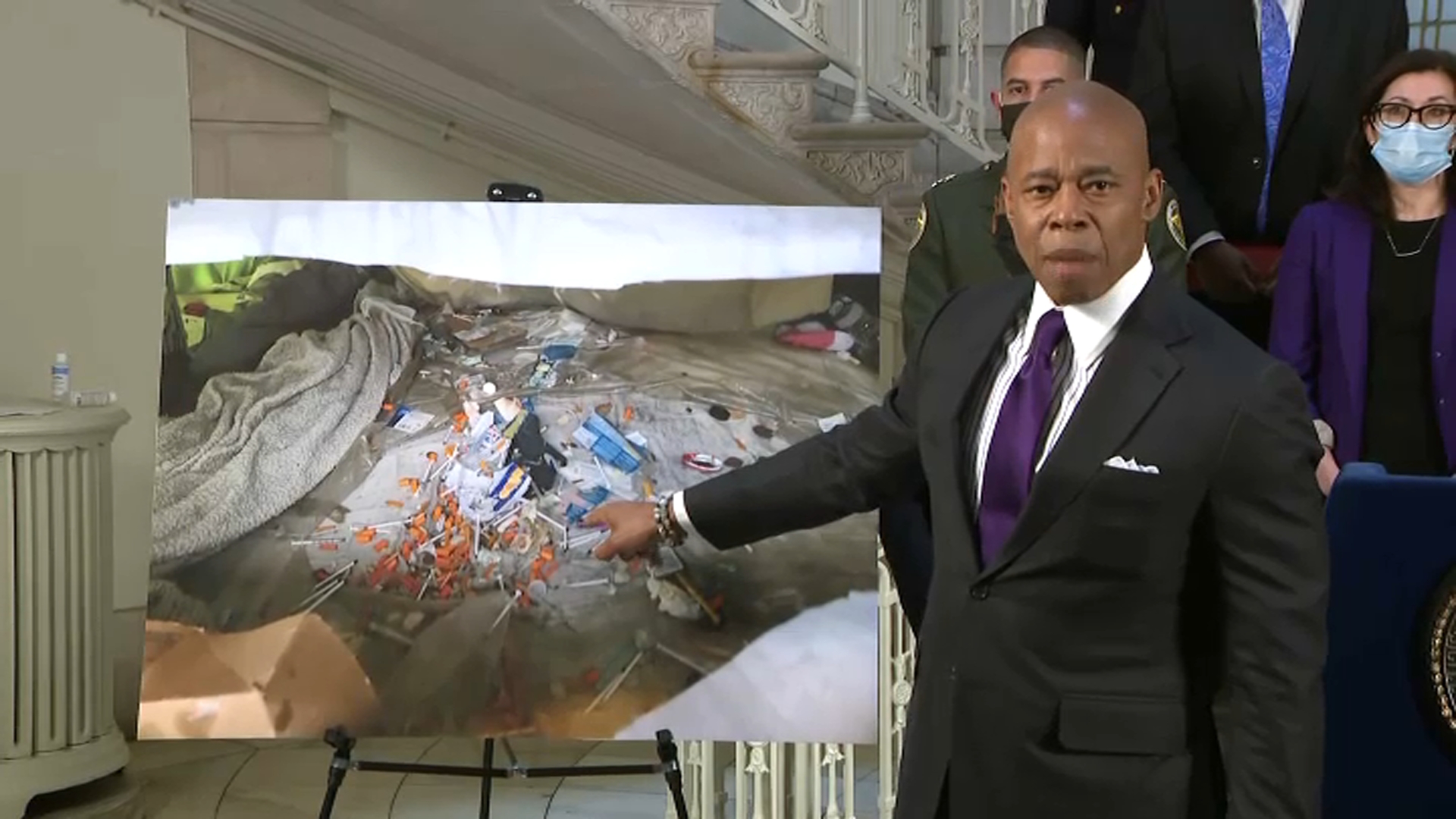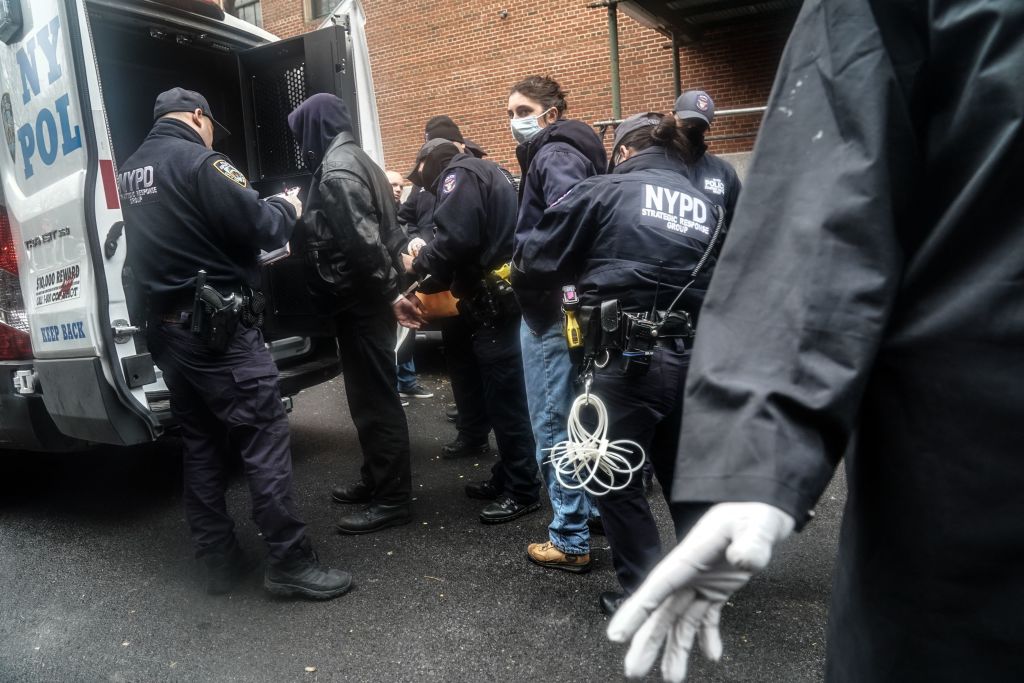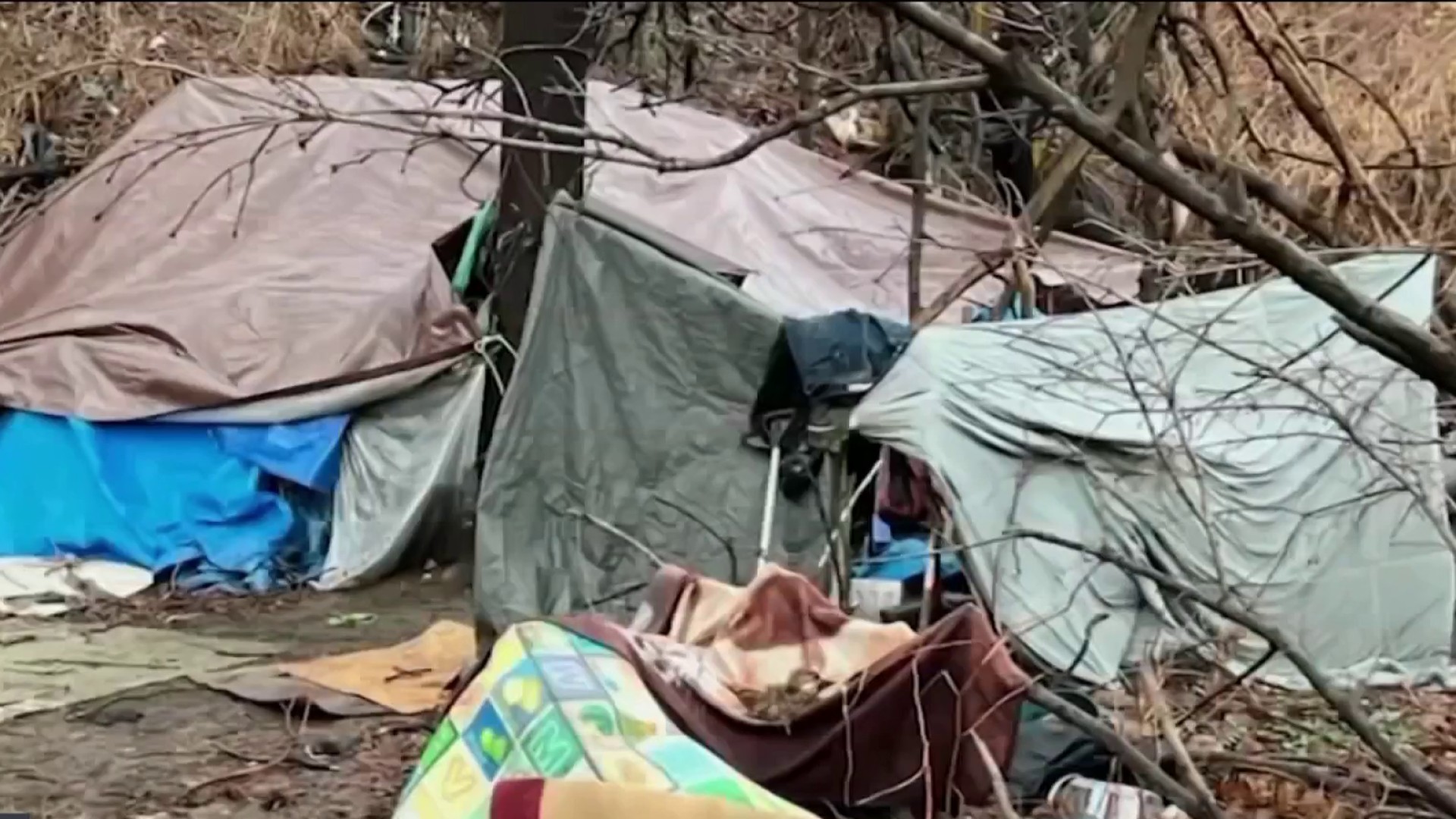Three months after the launch of the New York City's Subway Safety Plan, more than 1,300 people experiencing homelessness accepted help and shelter, Mayor Eric Adams announced Wednesday.
According to the Adams, 1,379 people accepted placement in safe haven, stabilization, and shelter beds as part of the Subway Safety Plan, a 17-page program to fight the massive spike in transit crime citywide.
The city's multi-pronged approach includes 30 "Joint Response Teams" with personnel from the Department of Health, the Department of Homeless Services, the NYPD and community groups.
Police will also have what the city called a "clear mandate" to enforce MTA rules, and will be trained on them. Among the prohibitions they will be expected to enforce: lying down on the seats, littering, drug use, or "using the subway system for any purpose other than transportation."
Get Tri-state area news and weather forecasts to your inbox. Sign up for NBC New York newsletters.
Another key change in the city's plan is requiring, rather than requesting, that people get off the train and leave the station at the ends of subway lines.
“Three months into our work making subways safer and connecting New Yorkers in need with services, and it is evident that our efforts are working,” Mayor Adams said in a statement. “We have connected more than 1,300 New Yorkers with shelter and other vital services and our teams are making hundreds of engagements every day on the subways, a monumental milestone.”
The number of those who accepted assistance is a great increase from the only 22 individuals who accepted help during the program's first week, according to the city.
According to the city, the outreach teams engage around 744 individuals in need daily through the Subway Safety Plan and the end-of-line outreach efforts to connect them with long-term permanent housing, mental health care, and other services.
“Every New Yorker deserves a permanent home and today’s milestone is a first step toward that goal,” Deputy Mayor for Health and Human Services Anne Williams-Isom said in a statement.”
As part of the Subway Safety Plan, the city is providing outreach services at all 24 end-of-line stations every night and throughout the subway system every day. At some EOL stations, enhanced outreach is provided overnight through joint response efforts that include various city departments and community-based providers.
Though the city describes the number of individuals helped through the Subway Safety Plan as a "milestone," some of Adams' approaches to ending homelessness in the city have proven controversial -- particularly his efforts in removing encampments throughout the city.
The renewed push to engage with and offer services to homeless people camped out on city streets comes amid an already underway effort to help them out of its sprawling subway system, which has been plagued by crime and aggressive behavior over the last few months. That's not just limited to the homeless, though.
That said, Adams argues the current situation involving street homelessness is untenable and that as a society we have grown accustomed to seeing these encampments and accepted it as a way of life -- something he called "unacceptable" and "dysfunctional."
"We are going to have a city that is far better than the dysfunctional city that we've had for far too long," he previously said in March when unveiling more information regarding the encampments throughout the city.
Adams previously said people living in these encampments are offered services, including information on "safe haven sites" with dozens of beds.

